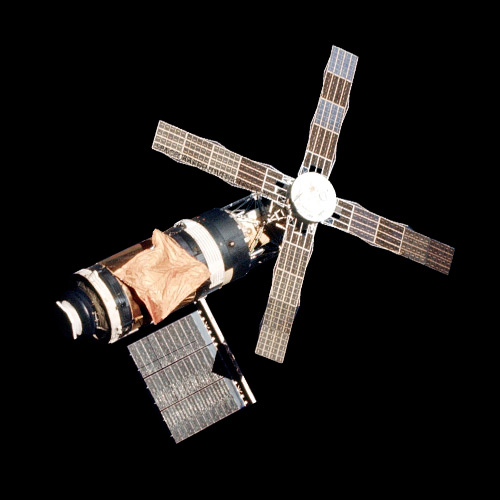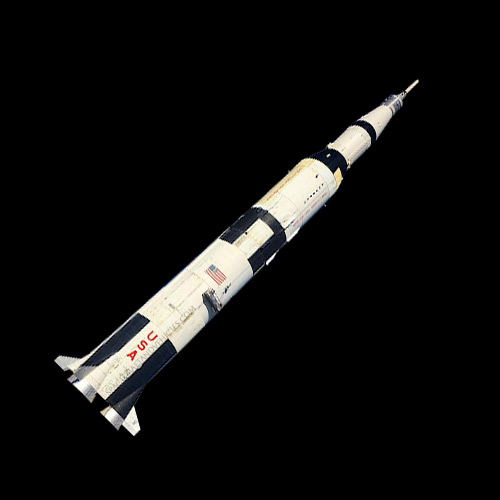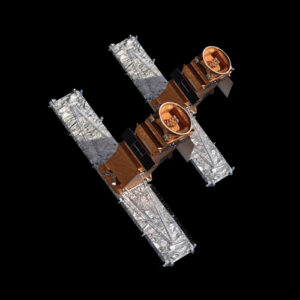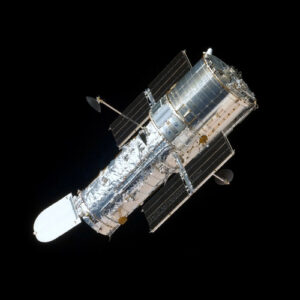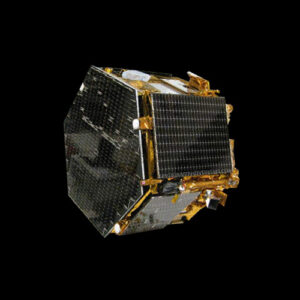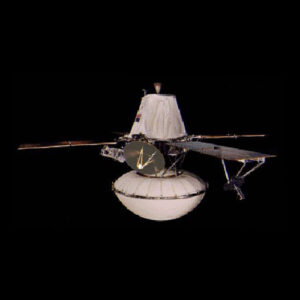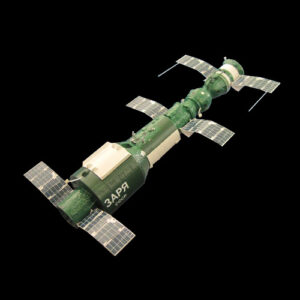Skylab, the United States‘ first space station, represented a monumental achievement in human space exploration. Launched by NASA on May 14, 1973, Skylab served as a pioneering platform for scientific research and technological innovation, demonstrating humanity’s capacity to live and work in space for extended periods.
Despite encountering challenges during its mission, Skylab paved the way for future space stations and contributed invaluable knowledge to various fields of study, including astronomy, Earth observation, and biomedical research.
Design and Construction
Skylab featured a cylindrical design, approximately 36 meters in length and 6.7 meters in diameter, with a total habitable volume of approximately 350 cubic meters. The space station comprised multiple modules, including a main habitat, workshop, and solar observatory, equipped with state-of-the-art scientific instruments and life support systems. Skylab utilized solar panels for power generation and orientation thrusters for attitude control.
Constructed from lightweight yet durable materials, Skylab prioritized functionality and versatility in supporting a wide range of scientific experiments and crew activities. Its modular design allowed for easy integration of scientific equipment and living quarters, enabling extended missions and continuous research in space.

Main Components (And How They Were Used)
The Orbital Workshop
Living quarters, laboratory, storage, power (solar panels)
The workshop was the main living and working area for the astronauts. It was converted from the Saturn V’s S-IVB stage (the third stage) and had most of the station’s volume (about 12,500 cubic feet or 354 m³). It had sleeping quarters, a galley kitchen, a shower, and storage areas for equipment.
The Apollo Telescope Mount
Solar observations (UV, X-ray, visible light telescopes)
The telescope mount was essentially a solar observatory attached to Skylab. It housed a suite of telescopes designed primarily to observe the Sun in ultraviolet, X-ray, and visible light.
The Airlock Module & Multiple Docking Adapter (MDA)
Spacewalk support, docking for Apollo spacecraft, equipment access
This module allowed astronauts to exit the station for spacewalks and served as the docking port for the Apollo spacecraft. It had two docking ports for visiting Apollo Command/Service Modules (CSMs).
Mission Objectives
The primary objective of Skylab was to conduct scientific research and experimentation in microgravity conditions, including studies in physics, materials science, and human physiology. For example:
1. Human Physiology and Biomedical Research:
- Muscle Atrophy and Bone Density Studies: Astronauts participated in experiments to understand how microgravity affects muscle mass and bone density.
- Fluid Shift Research: Investigations into how bodily fluids (for example, related to vision impairment) redistribute in microgravity environments.
- Psychological and Behavioral Studies: Assessments of crew behavior and psychological well-being aimed to improve long-duration space missions.
2. Solar Astronomy
- Apollo Telescope Mount (ATM): This suite of solar telescopes was deployed to study the Sun’s corona, solar flares, and other solar phenomena.
3. Earth Sciences and Remote Sensing
- Earth Resources Experiments Package (EREP): These experiments involved multispectral scanning to monitor Earth’s vegetation, water bodies, and geological features.
- Earth Radiation Experiment (ERE): Measured Earth’s radiation budget, enhancing our understanding of climate dynamics and the greenhouse effect.
4. Materials Science and Fluid Physics
- Crystal Growth Experiments: Investigated how crystals form and grow in microgravity, leading to improvements in materials with applications ranging from electronics to pharmaceuticals.
- Fluid Dynamics Studies: Explored the behavior of liquids and gases without the influence of gravity, aiding in the design of more efficient fluid systems for spacecraft.
5. Combustion Science
- Combustion Experiments: Studied how fires start, spread, and extinguish in microgravity. These experiments were crucial for developing fire safety protocols for future long-duration missions.
6. Astronomy and Astrophysics
- Ultraviolet and X-ray Observations: Utilized Skylab’s instruments to observe celestial objects in ultraviolet and X-ray wavelengths, providing data that complemented ground-based observations and advanced the field of astrophysics.
7. Technology Demonstrations
- Spacecraft Systems Testing: Skylab served as a testbed for life support systems, power generation, and other technologies essential for sustaining human presence in space.
- Robotic Systems: Early experiments with robotic tools and devices paved the way for more advanced robotics used in later space missions.
Secondary objectives included Earth observation, solar astronomy, and technology demonstration to advance space exploration capabilities.
Launch and Deployment
Skylab was launched aboard a Saturn V rocket from the Kennedy Space Center in Florida on May 14, 1973. This launch was significant because it was the final use of the Saturn V, the same rocket that carried astronauts to the Moon during the Apollo missions.
Following the successful launch, Skylab entered a stable orbit around Earth at an altitude of about 435 kilometers (270 miles), where it awaited the arrival of astronauts for crewed missions.
After reaching orbit, Skylab underwent initial checks and deployment procedures. This included deploying solar panels for power generation, although some damage occurred during the launch—one of its primary solar panels was ripped off, and the micrometeoroid shield was lost. Despite these setbacks, the space station remained operational, and the issues were addressed during subsequent missions.
The Three Skylab Missions
Three crewed missions followed the launch and deployment of Skylab. These were Skylab 2, Skylab 3, and Skylab 4, each launched using the Saturn IB rocket. The crews spent extended periods aboard the space station—up to 84 days—conducting a wide range of scientific experiments, spacewalks, and repairs.
Skylab 2
- Launch Date: May 25, 1973
- Purpose: Repair the damaged solar panels and micrometeoroid shields and conduct initial scientific experiments in space medicine, solar astronomy, and Earth observation.
- Crew: Pete Conrad (Commander), Paul Weitz (Pilot), and Joseph Kerwin (Science Pilot) – First physician in space.
Skylab 3
- Launch Date: July 28, 1973
- Purpose: Continue scientific experiments and conduct medical studies on long-duration spaceflight effects (28 days in orbit).
- Crew: Alan Bean (Commander), Jack Lousma (Pilot), and Owen Garriott (Science Pilot) – Electrical engineer and scientist.
Skylab 4
- Launch Date: November 16, 1973
- Purpose: Study long-term human adaptation to space and conduct spacewalks, including observing the Comet Kohoutek.
- Crew: Gerald Carr (Commander), William Pogue (Pilot), and Edward Gibson (Science Pilot) – Physicist and solar scientist.
Technical Specifications
- Dimensions: Approximately 36 meters in length and 6.7 meters in diameter.
- Weight: Skylab had a launch mass of approximately 77,000 kilograms.
- Power Source: Solar panels provided electrical power for the station’s systems.
- Instruments: Skylab was equipped with a variety of scientific instruments and experiments, including telescopes, spectrometers, and biomedical sensors.
Current Status
Skylab operated as a manned space station for approximately six years, hosting three crewed missions: Skylab 2, Skylab 3, and Skylab 4. During these missions, astronauts conducted a wide range of scientific experiments and observations, contributing valuable data to various fields of study.
Skylab became a crucial testbed for long-duration human spaceflight, preparing NASA for future endeavors like the Space Shuttle program and the International Space Station (ISS).
Following the conclusion of its operational phase, Skylab remained in orbit until it re-entered Earth’s atmosphere on July 11, 1979, where it disintegrated upon re-entry. Despite its relatively short operational lifespan, Skylab left a lasting legacy in space exploration, demonstrating the potential for sustained human presence in space and laying the groundwork for future endeavors in orbital habitation and scientific research.
